Rare Earth Oxide CeO2 Decorated Graphene Nanoplatelets-Reinforced 2024 Aluminum Alloy Matrix Composites Fabricated by Pressure Sintering Process
Abstract
:1. Introduction
2. Materials and Methods
2.1. Material
2.2. Procedure
3. Results
3.1. Material Characterization
3.2. Material Properties
4. Conclusions
Author Contributions
Funding
Institutional Review Board Statement
Informed Consent Statement
Conflicts of Interest
References and Note
- Wei, G.A.; Hz, A.; Wy, A.; Yin, Z.A.; Hua, Z.B.; Peng, P.A.; Fei, L.A.C. The microstructure and mechanical properties of C/C composite/Ti3Al alloy brazed joint with graphene nanoplatelet strengthened Ag-Cu-Ti filler. Ceram. Int. 2019, 45, 8783–8789. [Google Scholar]
- Ramezanzade, S.; Ebrahimi, G.R.; Torabi-Parizi, M.; Ezatpour, H.R. Synergetic effect of GNPs and MgOs on the mechanical properties of Mg–Sr–Ca alloy. Mater. Sci. Eng. A 2019, 761, 138025. [Google Scholar] [CrossRef]
- Medellín-Banda, D.I.; Navarro-Rodríguez, D.; Fernández-Tavizón, S.; Vila-Orta, C.A.; Comparán-Padilla, V.E. Enhancement of the thermal conductivity of polypropylene with low loadings of Cu-Ag alloy nanoparticles and graphene nanoplatelets. Mater. Today Commun. 2019, 21, 100695. [Google Scholar] [CrossRef]
- Rashad, M.; Pan, F.; Liu, Y.; Chen, X.; Lin, H.; Pan, R. High temperature formability of graphene nanoplatelets-AZ31 composites fabricated by stir-casting method. J. Magnes. Alloy. 2016, 4, 270–277. [Google Scholar] [CrossRef] [Green Version]
- Xu, R.; Zheng, X.; Chen, M.; Sun, L.; Ma, Y. Enhancing the linearity and stability of a fabric-based strain sensor with microfolded graphene structures. Appl. Sci. 2020, 10, 6230. [Google Scholar] [CrossRef]
- Srivyas, P.D.; Charoo, M.S. Tribological behavior of aluminum silicon eutectic alloy based composites under dry and wet sliding for variable load and sliding distance. Appl. Sci. 2020, 2, 1654.1–1654.21. [Google Scholar] [CrossRef]
- Tao, J.; Wang, J.; Zeng, Q. A comparative study on the influences of CNT and GNP on the piezoresistivity of cement composites. Mater. Lett. 2020, 259, 126858.1–126858.4. [Google Scholar] [CrossRef]
- Singh, S.; Sharma, S.; Keshri, A.K. Tribological Behaviour of Plasma-Sprayed Graphene Nanoplatelets Reinforced Hydroxyapatite Nanocomposite Coating. Trans. Indian Inst. Met. 2021, 74, 2901–2907. [Google Scholar] [CrossRef]
- Kumar, A.P.; Madhu, H.C.; Pariyar, A.; Perugu, C.S.; Kailas, S.V.; Uma, G.; Pradeep, R. Friction stir processing of squeeze cast A356 with surface compacted graphene nanoplatelets (GNPs) for the synthesis of metal matrix composites. Mater. Sci. Eng. 2020, 769, 138517.1–138517.10. [Google Scholar]
- Cai, Z.; Zhang, F.; Yang, C.; Wang, X.X.; Long, Y.Z. Graphene quantum dots doped pvdf(tbt)/pvp(tbt) fiber film with enhanced photocatalytic performance. Appl. Sci. 2020, 10, 596. [Google Scholar]
- Srivyas, P.D.; Charoo, M.S. Tribological behaviour of nano additive based PAO lubricant for eutectic Al-Si alloy-chromium plated chrome steel tribopair. Mater. Today Proc. 2020, 44, 1–6. [Google Scholar] [CrossRef]
- Li, J.; Zhang, X.; Geng, L. Improving graphene distribution and mechanical properties of GNP/Al composites by cold drawing. Mater. Des. 2018, 144, 159–168. [Google Scholar] [CrossRef]
- Sharma, A.; Sharma, V.M.; Sahoo, B.; Surjya, K.P.; Jinu, P. Effect of multiple micro channel reinforcement filling strategy on A16061-graphene nanocomposite fabricated through friction stir processing. J. Manuf. Process. 2019, 37, 53–70. [Google Scholar] [CrossRef]
- Li, J.; Zhang, X.; Geng, L. Effect of heat treatment on interfacial bonding and strengthening efficiency of graphene in GNP/Al composites. Compos. Part A Appl. Sci. Manuf. 2019, 121, 487–498. [Google Scholar] [CrossRef]
- Sharma, A.; Sharma, V.M.; Paul, J. A comparative study on microstructural evolution and surface properties of graphene/CNT reinforced Al6061SiC hybrid surface composite fabricated via friction stir processing. Trans. Nonferrous Met. Soc. China 2019, 29, 2005–2026. [Google Scholar] [CrossRef]
- Jjxa, B.; Hong, Y. Microstructure and mechanical properties of ADC12 composites reinforced with graphene nanoplates prepared by ultrasonic assisted casting. Trans. Nonferrous Met. Soc. China 2020, 30, 3210–3225. [Google Scholar]
- Yuan, Q.H.; Zhou, G.H.; Liao, L.; Liu, Y.; Luo, L. Interfacial structure in AZ91 alloy composites reinforced by graphene nanosheets. Carbon Int. J. Spons. Am. Carbon Soc. 2018, 127, 177–186. [Google Scholar] [CrossRef]
- Park, Y.; Cho, K.; Park, I.; Park, Y. Fabrication and mechanical properties of magnesium matrix composite reinforced with si coated carbon nanotubes. Procedia Eng. 2011, 10, 1446–1450. [Google Scholar] [CrossRef] [Green Version]
- Yuan, Q.; Zeng, X.; Wang, Y.; Luo, L.; Ding, Y.; Li, D.; Liu, Y. Microstructure and mechanical properties of Mg-4.0Zn alloy reinforced by NiO-coated CNTs. J. Mater. Sci. Technol. 2017, 33, 452–460. [Google Scholar] [CrossRef]
- Yuan, Q.H.; Qiu, Z.Q.; Zhou, G.H.; Zeng, X.S.; Luo, L.; Rao, X.X. Interfacial design and strengthening mechanisms of az91 alloy reinforced with in-situ reduced graphene oxide. Mater. Charact. 2018, 138, 215–228. [Google Scholar] [CrossRef]
- Joint Committee on Powder Diffraction Standards (JCPDS). International Centre for Diffraction Data. PCPDFWIN. 2002.
- Kumar, H.G.P.; Prabhakaran, S.; Xavior, M.A.; Kalainathan, S.; Lin, D.; Shukla, P.; Vasudevan, V.K. Enhanced surface and mechanical properties of bioinspired nanolaminate graphene-aluminum alloy nanocomposites through laser shock processing for engineering applications. Mater. Today Commun. 2018, 16, 81–89. [Google Scholar]
- Hccab, C.; Yllab, C. The microstructures and mechanical properties of graphene-reinforced titanium matrix composites. J. Alloy. Compd. 2021, 812, 152057. [Google Scholar]
- Wu, L.; Wu, R.; Hou, L.; Zhang, J.; Zhang, M. Microstructure, mechanical properties and wear performance of AZ31 matrix composites reinforced by graphene nanoplatelets(gnps). J. Alloy. Compd. 2018, 750, 530–536. [Google Scholar] [CrossRef]
- Li, N.; Yan, H.; Wu, Q. Fabrication of Carbon Nanotubes and Rare Earth Pr Reinforced AZ91 Composites by Powder Metallurgy. Chin. J. Mech. Eng. 2021, 2, 213–222. [Google Scholar] [CrossRef]
- Rashad, M.; Pan, F.; Tang, A.; Asif, M.; Hussain, S.; Gou, J.; Mao, J.J. Improved strength and ductility of magnesium with addition of aluminum and graphene nanoplatelets (Al+GNPs) using semi powder metallurgy method. J. Ind. Eng. Chem. 2015, 23, 243–250. [Google Scholar] [CrossRef]
- Rashad, M.; Pan, F.; Asif, M.; Tang, A. Powder metallurgy of Mg–1%Al–1%Sn alloy reinforced with low content of graphene nanoplatelets (GNPs). J. Ind. Eng. Chem. 2014, 20, 4250–4255. [Google Scholar] [CrossRef]
- Miller, W.; Humphreys, F. Strengthening mechanisms in particulate metalmatrix composites: Reply to comments by Arsenault. Scr. Metal. Mater. 1991, 25, 2623–2626. [Google Scholar] [CrossRef]
- Bisht, A.; Srivastava, M.; Kumar, R.M.; Lahiri, I.; Lahiri, D. Strengthening mechanism in graphene nanoplatelets reinforced aluminum composite fabricated through spark plasma sintering. Mater. Sci. Eng. A 2017, 695, 20–28. [Google Scholar] [CrossRef]
- Xiong, B.; Gang, L. Effects of graphene content on microstructures and tensile property of graphene-nanosheets/aluminum composites. J. Mater. Sci. Solid State Chem. Phys. 2017, 697, 31–36. [Google Scholar]
- Enel, M.C.; Gurbuz, M.; Ko, E. Effect of graphene content on tensile strength and microstructure of aluminum matrix composites. Univers. J. Mater. Sci. 2018, 6, 79–84. [Google Scholar]
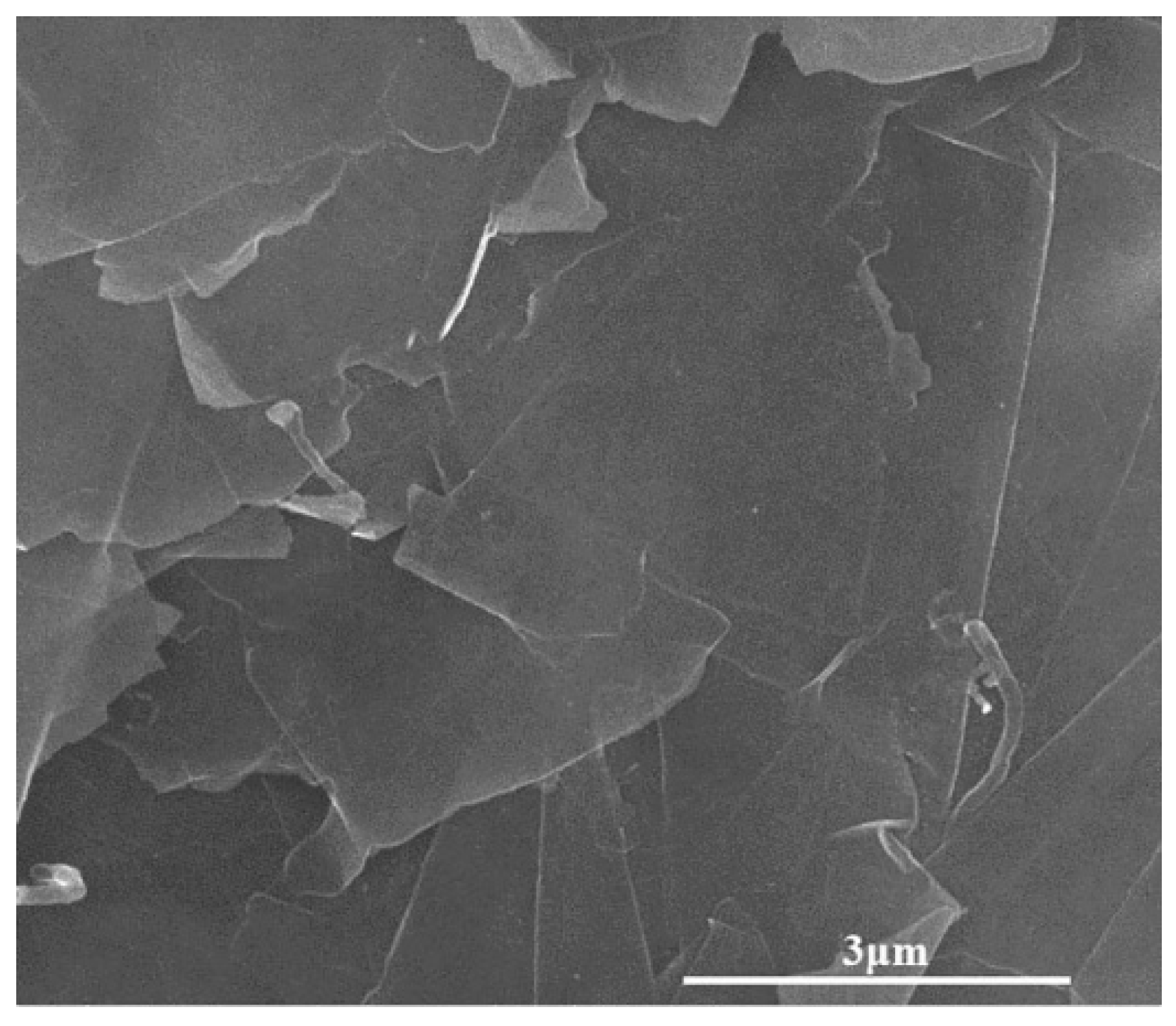
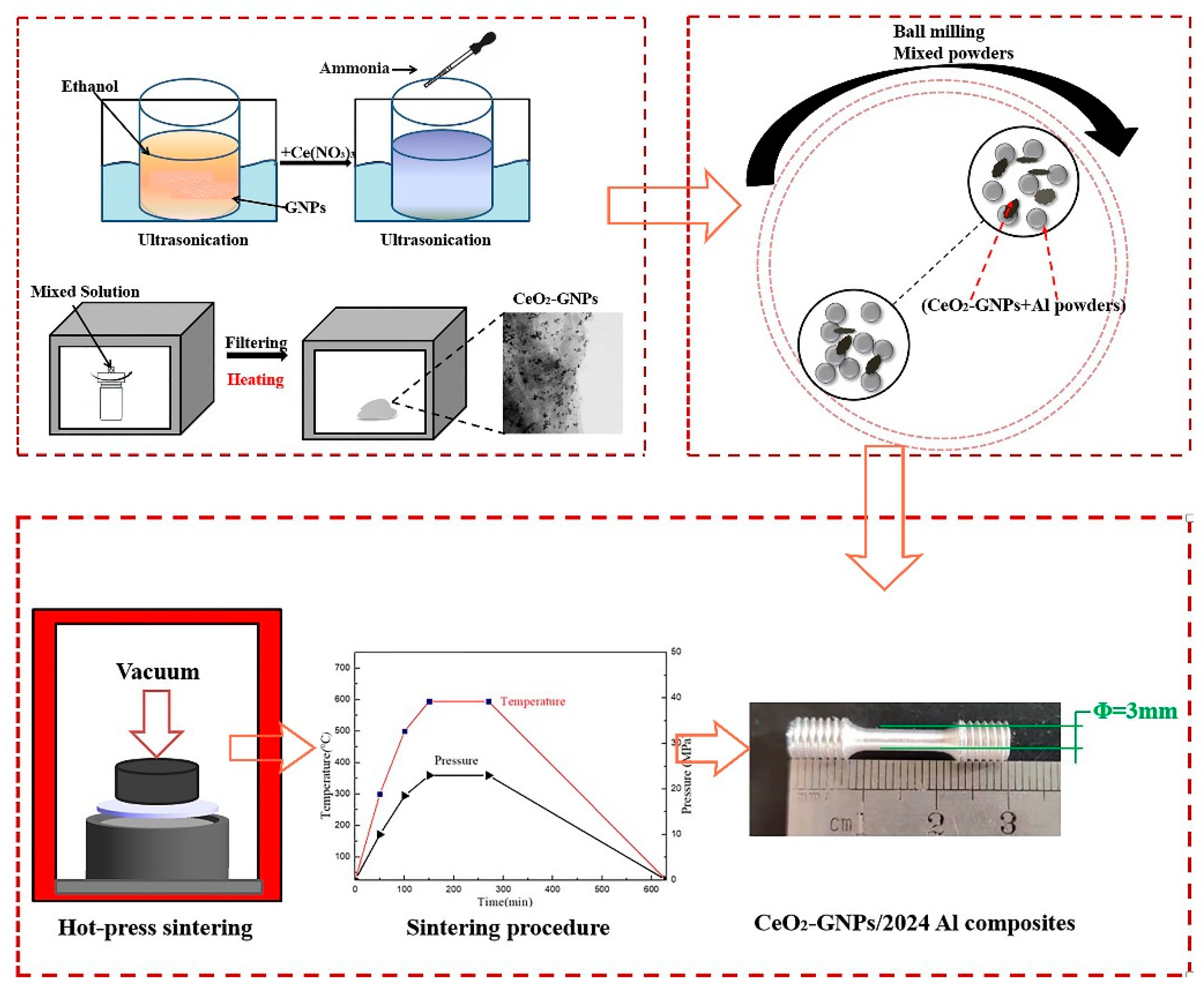
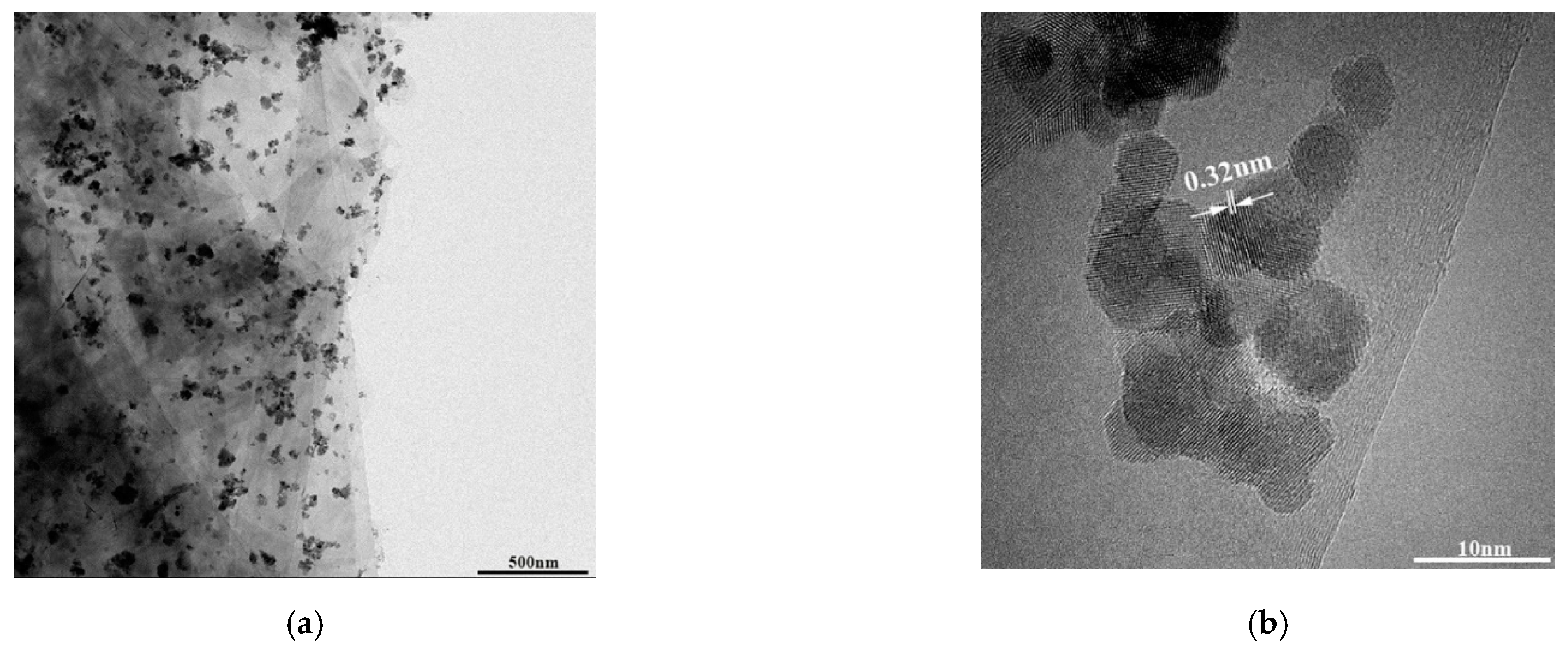
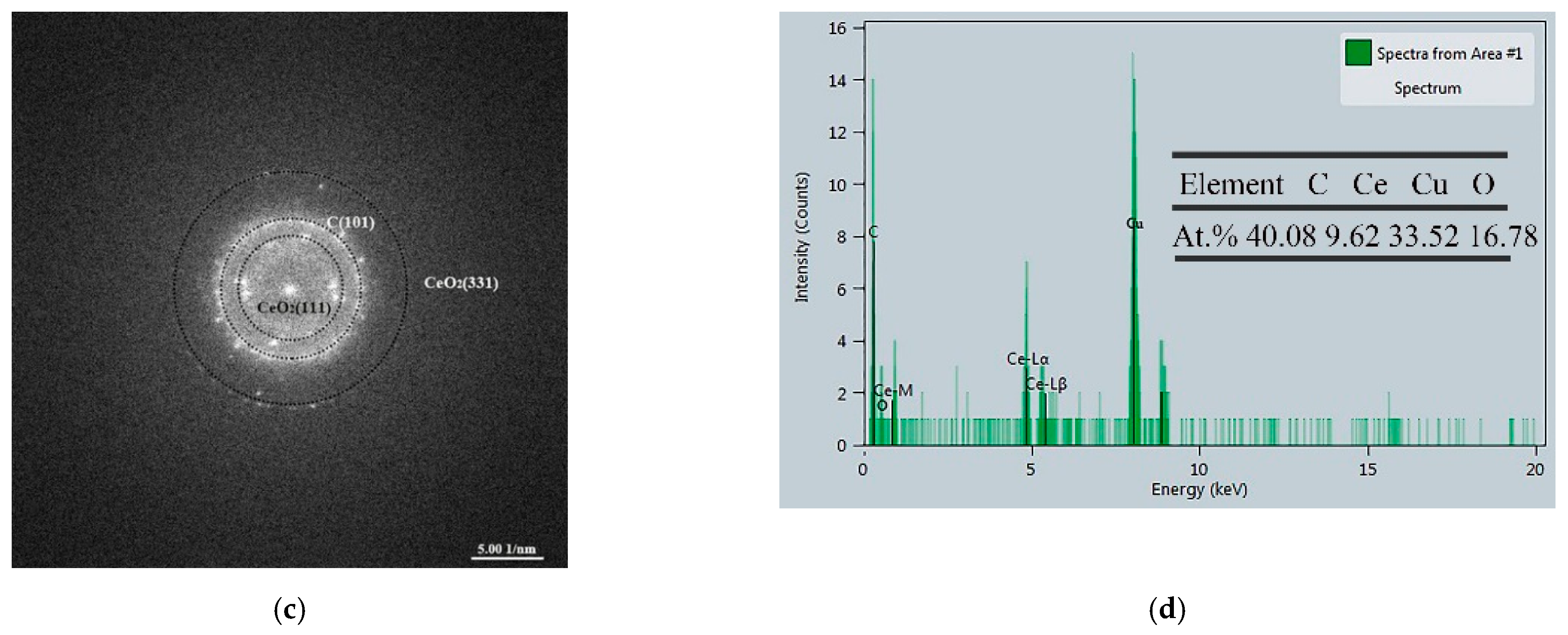
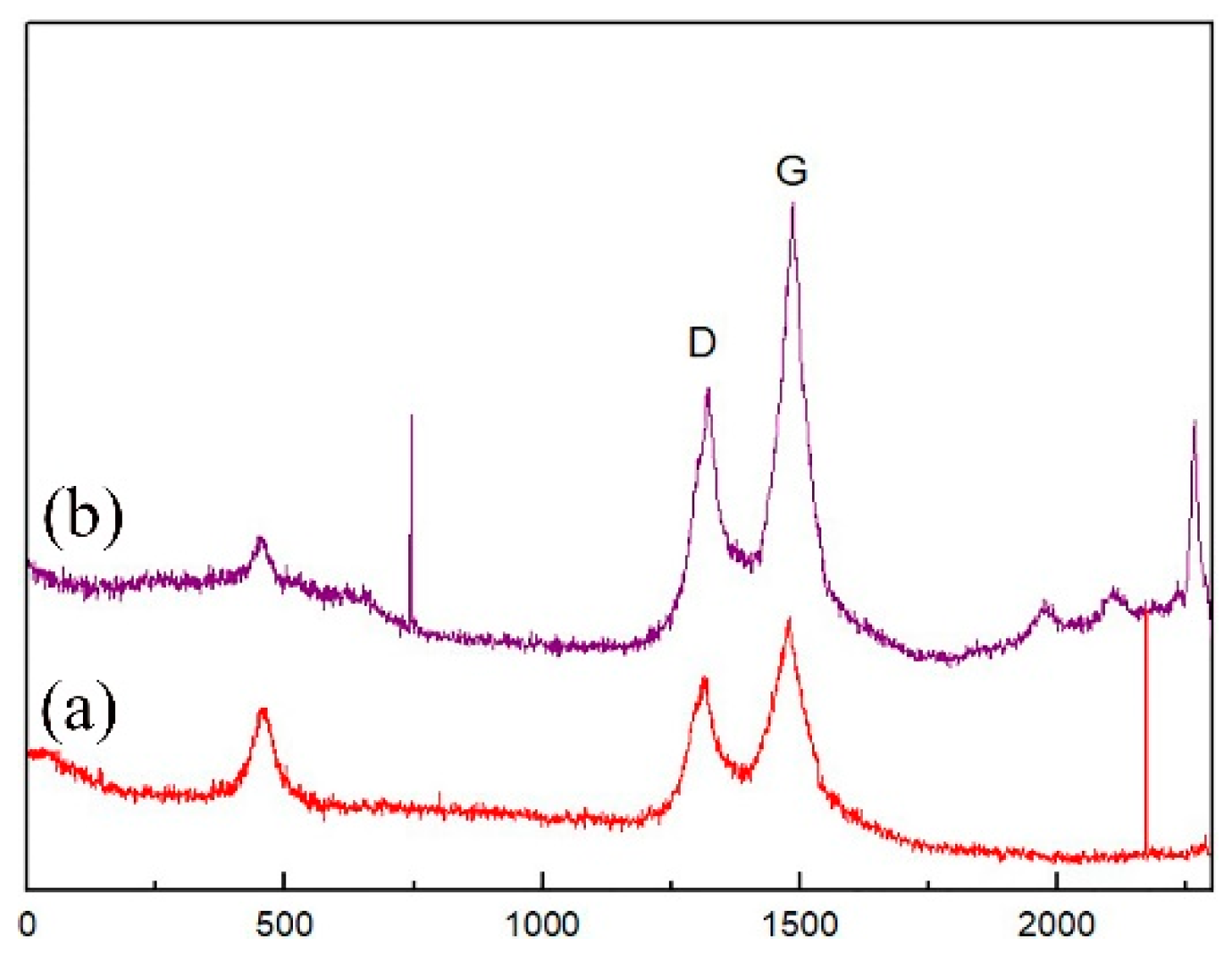
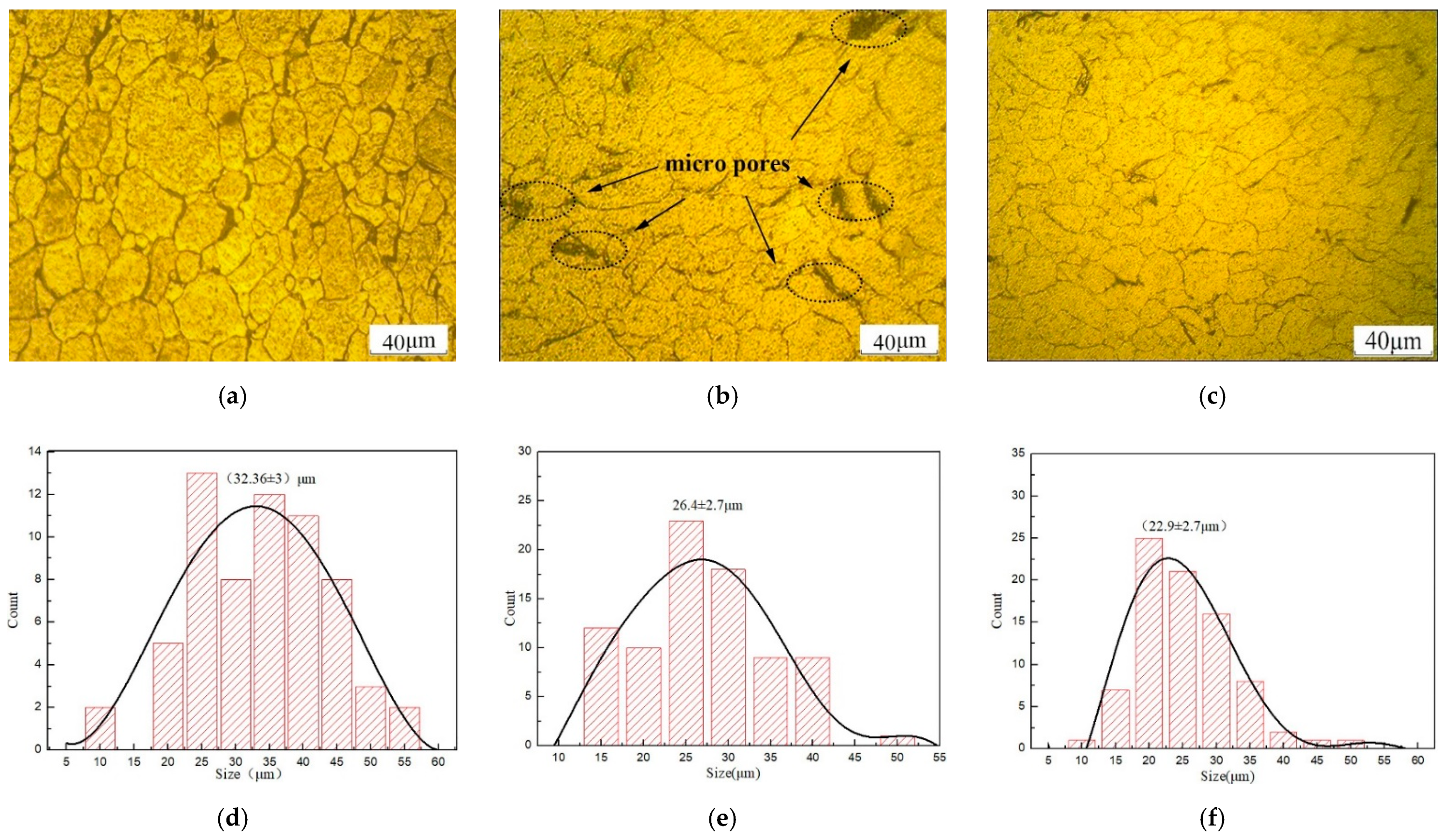

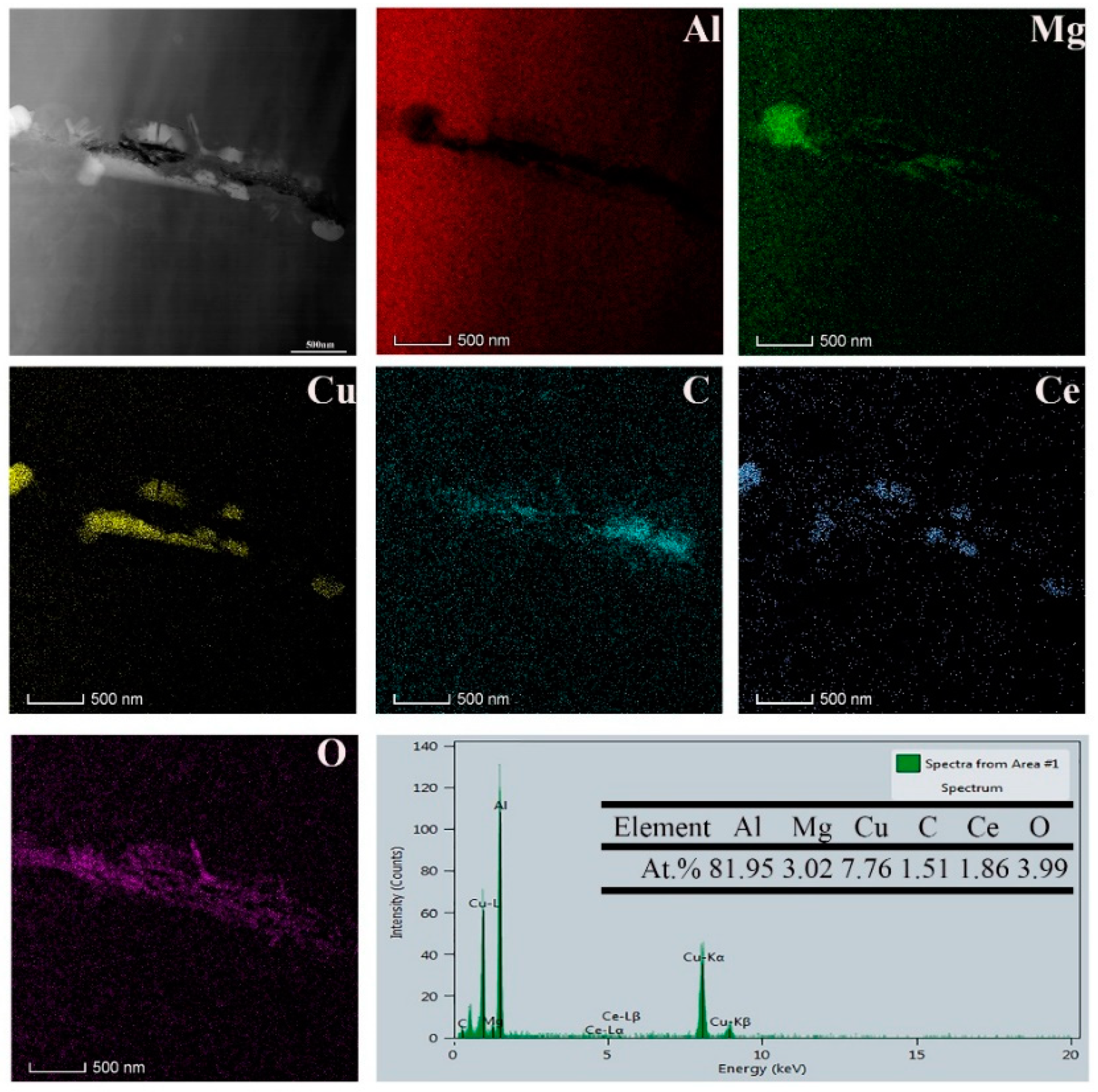
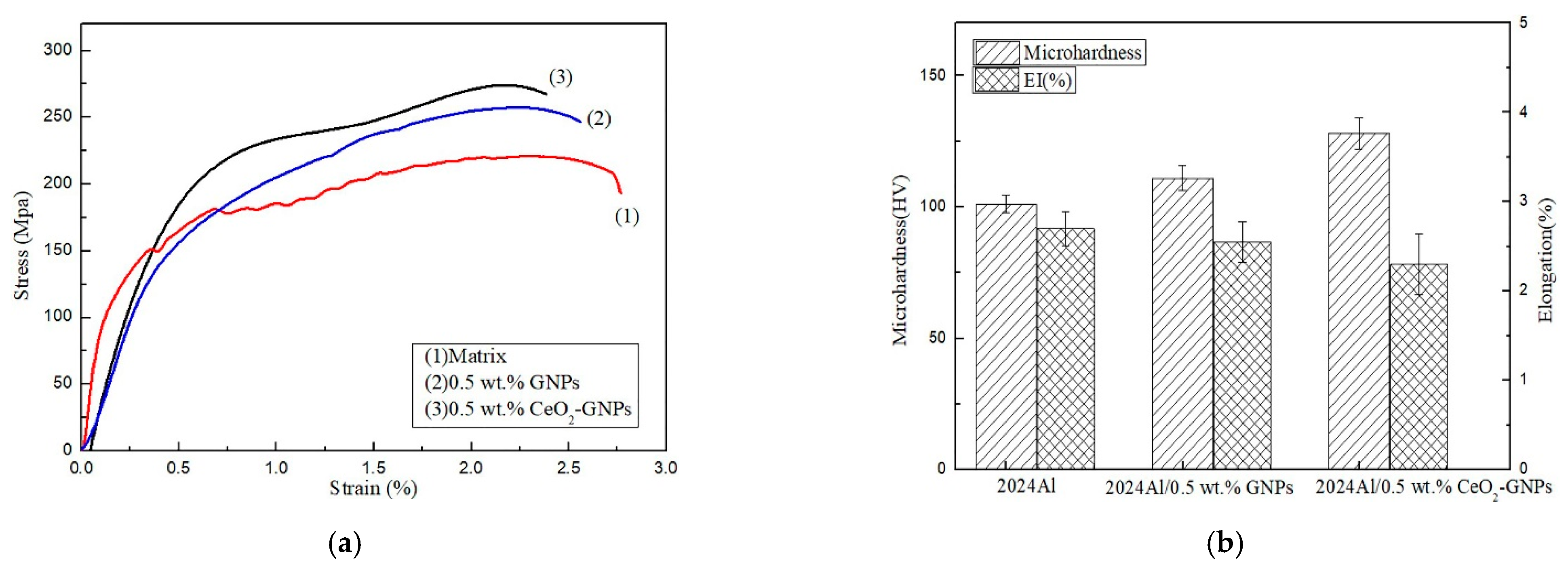
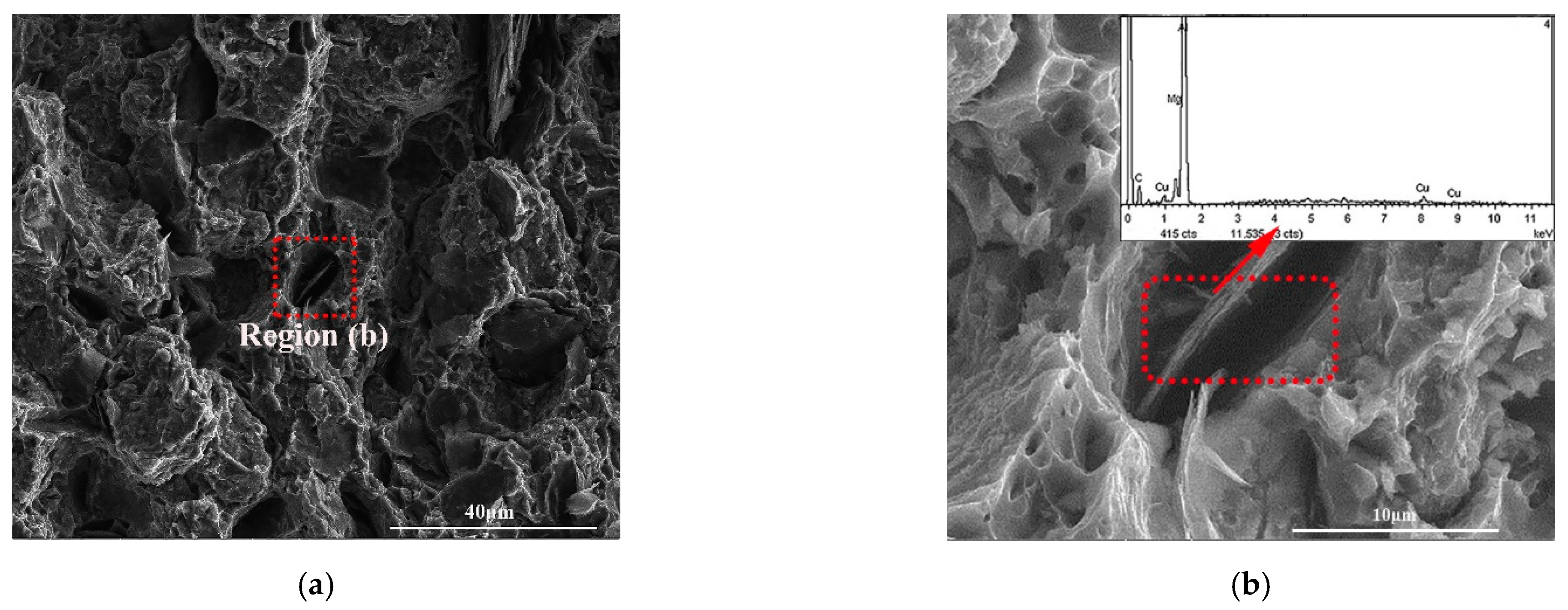
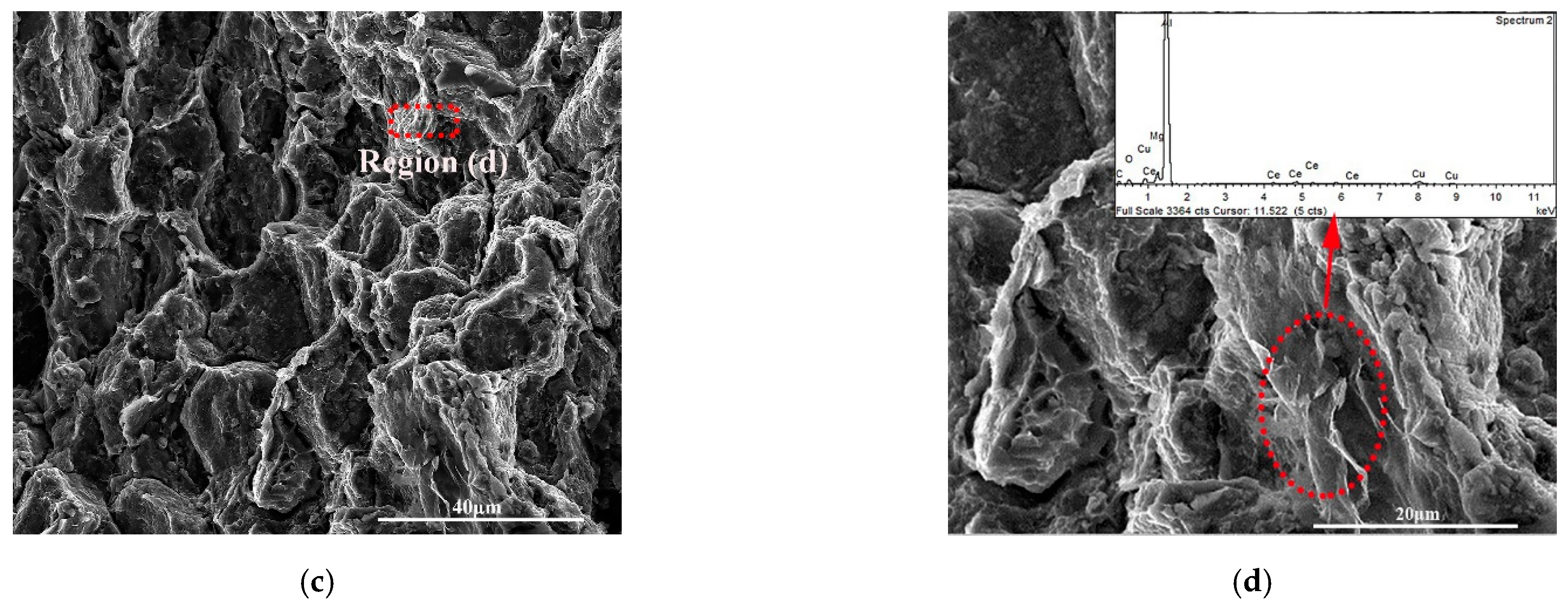
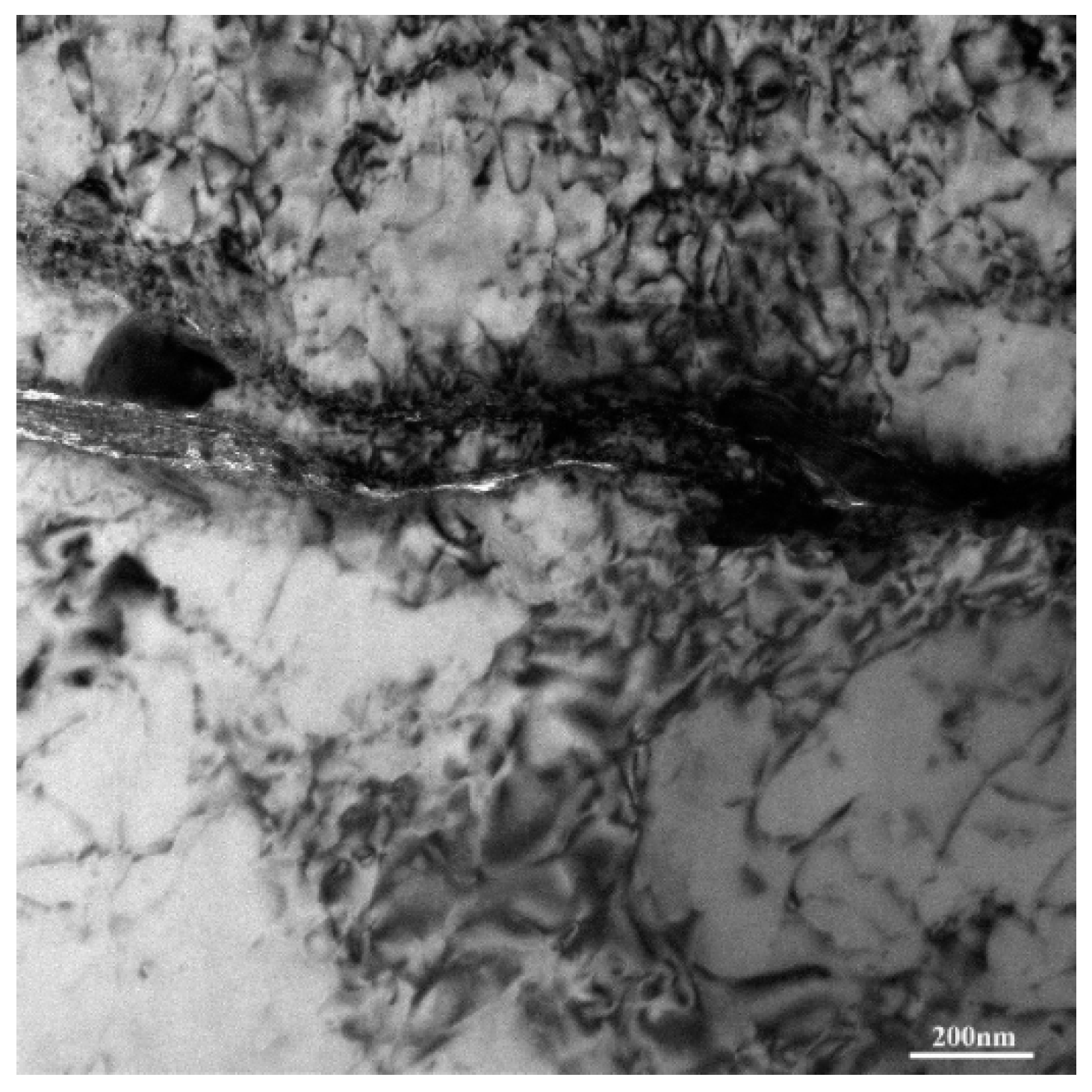
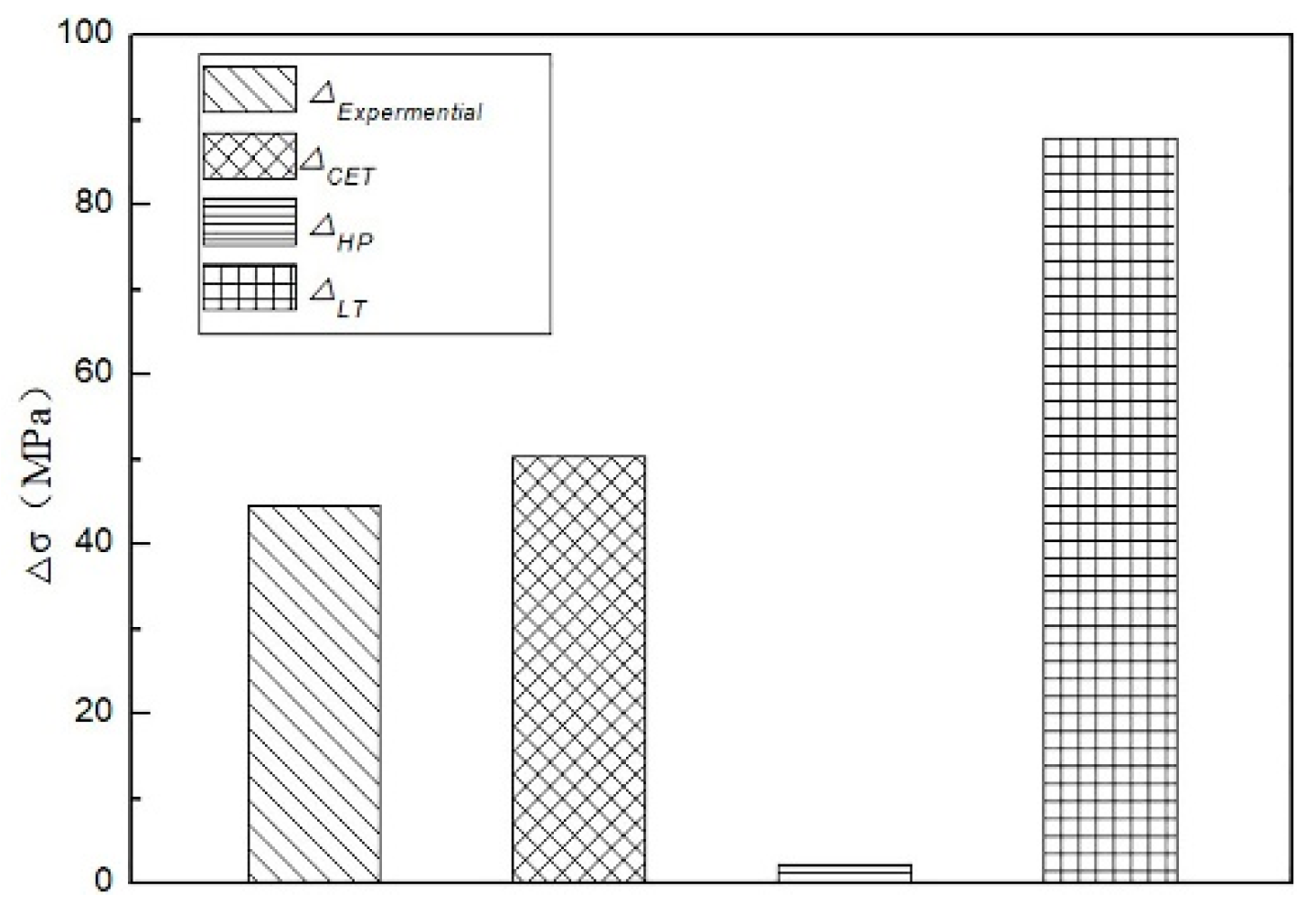
| Type | Cu | Mg | Fe | Zn | Al |
|---|---|---|---|---|---|
| Wt pct | 3.8~5.0 | 1.2~1.8 | 0.5 | 0.25 | Bal. |
| Composites | YS (MPa) | UTS (MPa) | Microhardness (Hv) |
|---|---|---|---|
| 2024Al | 152 | 218 | 101.2 |
| 2024Al composite/0.5 wt.% GNPs | 170.6 | 257.4 | 111 |
| 2024Al composite/0.5 wt.% CeO2-GNPs | 184.1 | 271.8 | 128 |
Publisher’s Note: MDPI stays neutral with regard to jurisdictional claims in published maps and institutional affiliations. |
© 2021 by the authors. Licensee MDPI, Basel, Switzerland. This article is an open access article distributed under the terms and conditions of the Creative Commons Attribution (CC BY) license (https://creativecommons.org/licenses/by/4.0/).
Share and Cite
Guo, Z.; Li, S.; Wu, Q.; Li, N. Rare Earth Oxide CeO2 Decorated Graphene Nanoplatelets-Reinforced 2024 Aluminum Alloy Matrix Composites Fabricated by Pressure Sintering Process. Appl. Sci. 2021, 11, 11177. https://doi.org/10.3390/app112311177
Guo Z, Li S, Wu Q, Li N. Rare Earth Oxide CeO2 Decorated Graphene Nanoplatelets-Reinforced 2024 Aluminum Alloy Matrix Composites Fabricated by Pressure Sintering Process. Applied Sciences. 2021; 11(23):11177. https://doi.org/10.3390/app112311177
Chicago/Turabian StyleGuo, Zhenghua, Surui Li, Qingjie Wu, and Ning Li. 2021. "Rare Earth Oxide CeO2 Decorated Graphene Nanoplatelets-Reinforced 2024 Aluminum Alloy Matrix Composites Fabricated by Pressure Sintering Process" Applied Sciences 11, no. 23: 11177. https://doi.org/10.3390/app112311177
APA StyleGuo, Z., Li, S., Wu, Q., & Li, N. (2021). Rare Earth Oxide CeO2 Decorated Graphene Nanoplatelets-Reinforced 2024 Aluminum Alloy Matrix Composites Fabricated by Pressure Sintering Process. Applied Sciences, 11(23), 11177. https://doi.org/10.3390/app112311177





